The Myth of the “Perfect Meditator”
If you’ve ever sat down, closed your eyes, and instantly felt like you were doing meditation wrong—welcome to the club.
When I first started my meditation practice, my mind wasn’t just wandering—it was sprinting marathons. I couldn’t focus on a single deep breath without thinking about my to-do list, my phone, or the part of my body that suddenly itched for no reason at all.
For years, I believed that meditation was for calm people—the kind who drink green juice, have a dedicated
meditation space filled with crystals, and somehow know the right way to “be still.” I told myself, “This isn’t for people like me.” Especially not someone with ADHD, a racing mind, and a nervous system that had lived most of its life on high alert.
II. The Hidden Reasons You Can’t Meditate
The Root of My People-Pleasing Behaviors
Let’s be honest — most people don’t “fail” at meditation because they’re lazy or uncommitted. They give up because nobody ever told them that struggling to meditate is actually part of the process.
I used to believe there was something wrong with me because every meditation session felt like a mental wrestling match. My mind wandered. My body felt restless. I’d think about dinner, emails, and whether or not I was doing it the right way. Spoiler alert: there is no right way. There’s only your way.
Below are some of the most common misconceptions and hidden obstacles that keep people from finding their rhythm — including the one that held me back for years.
1. Your Nervous System Isn’t Broken — It’s Overstimulated
If you feel like meditation makes you more anxious, you’re not alone. Most of us live in a constant state of “go.” Our nervous system is so used to multitasking that when we finally sit still, it doesn’t know what to do with all that silence.
That racing mind? It’s your body saying, “Wait… are we safe?” Meditation doesn’t create those anxious thoughts — it reveals them. And that’s actually good news, because awareness is the first step toward inner peace.
Try this next time you meditate: before you even close your eyes, take one deep breath in and one long exhale out. Feel what part of the body softens as you do. You’re not failing if your mind wanders — you’re teaching your body it’s okay to rest. That’s a huge win for your mental health and physical health.
2. Your Mind Isn’t the Enemy — It’s Doing Its Job
The goal of meditation isn’t to stop thinking. It’s to notice your thoughts without letting them run the show. When you realize that, the whole experience shifts.
Every time your mind wanders, and you gently guide it back to the present moment, you’re strengthening your awareness like a muscle. That’s the true benefit of meditation — not silence, but self-regulation.
So if your inner dialogue sounds like, “Why can’t I stop thinking?” remember: that is mindfulness. You noticed. You returned. You practiced. That’s meditation, and it works whether it lasts twenty minutes or zero minutes.
3. You’ve Been Taught Meditation the Wrong Way
If you’ve ever felt pressured to meditate in a silent room for thirty minutes, it’s no wonder you gave up. That’s too much pressure for anyone starting out — especially business owners, parents, or anyone with a mind that’s always on.
The truth is, there are various ways to meditate. You might prefer a guided meditation, a body scan, or even a form of mindful movement like stretching or slow walking. You can use a meditation app like the Headspace app or Insight Timer. You can also try mindfulness meditations that focus on physical sensations instead of silence.
There’s no wrong way — only natural ways that fit your personality and daily life. The only way to make meditation stick is to find what feels doable and genuine for you.
4. You’re Trying to Meditate While in Survival Mode
If you’ve experienced trauma, addiction, chronic pain, or anxiety, sitting still can feel unsafe. That was me for years. My nervous system didn’t know how to rest, so silence felt like danger.
Meditation doesn’t have to mean closing your eyes and diving into your mind. It can mean taking a mindful shower, noticing the way your body feels as warm water hits your skin. It can mean breathing intentionally while making coffee or doing a one-minute check-in before bed.
A daily practice doesn’t have to be perfect. It just has to be consistent. Even one minute of mindful breathing helps regulate your nervous system and improve both mental and physical health.
5. You Think Meditation Looks a Certain Way
We’re all a little guilty of comparing our inner experience to someone else’s outer image on social media. Maybe you think you need a dedicated meditation space with soft lighting, or group classes led by a mindfulness meditation teacher to “do it right.”
But meditation isn’t about appearances — it’s about awareness. The person meditating on their couch with a screaming toddler in the next room is just as valid as the monk in a temple.
You can turn daily life into your meditation session: taking a deep breath before a meeting, feeling your feet on the floor, or even pausing to notice how your body feels when you’re making friends or listening to someone.
That’s mindfulness. That’s connection. And that’s progress.
When you stop trying to meditate the “right way” and start allowing it to be your way, everything changes. The most important thing is simply showing up for yourself — even for a few deep breaths at a time.
Because here’s the truth: meditation doesn’t demand perfection. It invites presence.
III. What’s Really Going On Beneath the Struggle
The first time I tried to meditate, I lasted about six seconds before my brain went, “Nope.”
I remember sitting there thinking, “There’s just no way. My mind doesn’t work like other people’s.”
If that sounds familiar, you’re not broken — you’re human. And if you’ve ever been told to “just take a deep breath and relax,” you know that’s about as useful as telling someone with chronic pain to “just walk it off.”
The truth is, meditation isn’t always peaceful. In the beginning, it can actually feel uncomfortable, frustrating, or even emotional. That’s because meditation reveals what’s already there — it doesn’t create it.
1. Meditation Is Confronting You With Yourself
When we slow down long enough to notice our thoughts, we also start to notice how we’ve been living on autopilot. The mind gets loud because it finally has a chance to speak. All those anxious thoughts you’ve been avoiding — they come up in meditation so they can be released, not punished.
You might feel physical sensations like tightness in your chest or fluttering in your stomach. You might even notice emotions rising that you didn’t realize were still stored in the body. This is normal. It’s your nervous system doing its job — processing.
The next time that happens, instead of fighting it, take one deep breath and say to yourself, “This is what healing feels like.” That’s the moment your body begins to trust you again. That’s the real benefit of meditation — inner peace through presence.
2. You’re Not Bad at Meditation — You’re Just Meeting Your Mind
I used to say, “I can’t meditate, I have ADHD.” It became one of my most deeply held beliefs. For years, I thought meditation was for people with quiet brains — not for someone like me, whose mind was like a fireworks show 24/7.
Looking back now, after six years of meditating twice a day, I realize that mindset kept me stuck. I manifested more of the same chaos simply because I kept affirming that I couldn’t do it.
Meditation didn’t cure my ADHD, but it gave me something I never had before — awareness. It helped me notice what part of my body feels tense when my mind races, and how a single deep breath can shift my energy before I spiral.
When your mind wanders, that’s not failure. That’s the practice. Every time you come back to the present moment, you’re retraining your brain. It’s the same as strengthening a muscle. The ongoing process of noticing and returning is what builds the calm you’ve been chasing.
3. Your Brain Is Rewiring Itself (Even When You Think You’re Failing)
Here’s the good news: even when you think meditation “isn’t working,” your brain is still changing. Regular meditation literally rewires neural pathways that govern focus, emotional regulation, and self-awareness.
That means even short sessions — the ones where you swear you didn’t “feel” anything — are quietly strengthening your mental health. You’re creating new connections that make it easier to find peace in your daily life.
It’s not about how long you sit. It’s about showing up. Whether it’s ten minutes, five minutes, or even zero minutes of silence and a few conscious breaths — it all counts.
4. Resistance Is a Sign You’re Doing It Right
One of the most common obstacles in a personal meditation journey is thinking that resistance means failure. In reality, resistance means something important is happening.
When you sit with your thoughts instead of running from them, you’re rewiring patterns that have ruled your life for years. The body might resist because it doesn’t yet feel safe. That’s okay. The only way through is patience.
It’s an ongoing process — one that gets easier, lighter, and more natural the more you practice. The next time you feel like you’re doing meditation the “wrong way,” take a deep breath and remember: you’re not doing it wrong. You’re just learning a new language — the language of your own mind.
When you finally stop trying to force meditation and start letting it unfold, something magical happens. You begin to notice how much softer your inner world becomes. Your body feels safer. Your breath feels deeper. Your thoughts lose their edge.
And little by little, the same mind that once felt like a battlefield starts to feel like home.
IV. The Manifestation Loop — How “I Can’t Meditate” Becomes a Self-FulfillingProphecy
If you’ve ever said, “I can’t meditate,” I get it. I used to say it too — and I meant it with my whole heart.
What I didn’t realize back then was that every time I repeated those words, I was teaching my brain and my nervous system to believe them.
When we tell ourselves a story long enough, our subconscious listens. It doesn’t question or argue — it just obeys. So when we say, “I can’t sit still,” or “My racing mind will never quiet down,” that becomes our internal instruction manual.
And here’s the wild part: the more we think that way, the more we manifest the very experience we’re trying to avoid.
1. Your Thoughts Create the Experience
The mind loves to prove itself right. When you believe meditation is impossible for you, your subconscious starts scanning for evidence — restlessness, distraction, discomfort — and saying, “See? Told you so.”
This is how thought turns into pattern. You’re not failing your meditation practice; you’re fulfilling your own prophecy.
The good news? The loop can be rewritten just as easily.
The next time your mind wanders, try saying, “This is part of the process.”
That tiny shift moves you from self-judgment to self-observation — and that’s where the real benefits of meditation begin to unfold.
2. Your Nervous System Responds to Your Beliefs
Your body listens to your thoughts more closely than you think. If you approach your meditation session expecting chaos, your nervous system will gear up for it. But if you take a deep breath, soften your shoulders, and meet the moment with an open mind, your body feels safe to relax.
That’s not magic — that’s biology.
When the mind says, “It’s safe to slow down,” the body listens.
When it says, “This is pointless,” the body stays on alert.
So before you meditate, take a moment to affirm something gentle and believable:
- “My body knows how to find stillness.”
- “I’m learning to be here, now.”
- “Even if I only meditate for a few deep breaths, that’s enough.”
Those words help your nervous system rewire itself in real time.
3. Energy Flows Where Belief Goes
Energy is like water — it follows the path of least resistance. If your belief is “I can’t meditate,” all that energy flows toward proving the struggle. But if you gently redirect it to “I’m learning to meditate,” suddenly everything inside you starts moving toward ease.
This is the subtle power of manifestation: you attract experiences that match your dominant vibration. When your inner dialogue softens, meditation no longer feels like a fight. It starts to feel like relief.
Your regular meditation doesn’t have to be perfect. It just has to exist. Whether it’s a short guided meditation before bed, a one-minute body scan in the morning, or mindful breathing while brushing your teeth, each act signals your subconscious that you’re capable — and consistent.
4. Rewrite the Script — One Breath at a Time
The next time you hear yourself say, “I can’t meditate,” pause. Take a slow, deep breath. Feel what part of your body feels tense when you say it. Then whisper, “I’m open to learning.”
That single moment of awareness is enough to start changing the narrative.
Your meditation practice doesn’t have to look like anyone else’s. Maybe your form of mindful movement is gardening, dancing, or journaling. Perhaps you use a meditation app like Headspace. Maybe your personal meditation happens in the car before work, or in bed before sleep.
There are countless natural ways to meditate — all that matters is that you show up.
The only way to do it wrong is not to try.
When we stop saying “I can’t,” we stop manifesting resistance.
We create space for peace, focus, and healing to grow on their own.
You don’t have to believe you’re good at meditation yet — you just have to believe you’re becoming someone who is. And that belief alone starts the transformation.
V. How to Make Meditation Work for You
Here’s the thing: meditation isn’t about being still — it’s about being honest.
It’s learning to sit with yourself without trying to fix or flee.
And if you’ve struggled to make it stick, that doesn’t mean you’re not cut out for it. It just means you haven’t found your way yet.
There are various ways to meditate — and every single one is valid. The key is finding what feels natural, sustainable, and supportive for you.
Below are some practical tips that can help you turn meditation from a chore into something that feels like coming home.
1. Start With What Feels Safe
If you’ve spent years in survival mode, silence can feel threatening. The moment you sit down, your nervous system goes on alert — scanning for danger in the quiet. That’s okay. That’s part of the process.
Start where your body feels comfortable.
Try a short guided meditation, a gentle body scan, or even mindful breathing while walking. The good news is that the benefits of meditation begin the moment you notice your breath — not after you’ve mastered sitting cross-legged in stillness.
For beginners, a meditation app like the Headspace app or Insight Timer can be a great way to explore different styles until one clicks. Think of it as building a relationship with your mind — one deep breath at a time.
2. Move Before You Sit
If sitting still feels impossible, don’t force it. Movement helps discharge built-up energy so your body can settle naturally.
Stretch, dance, do yoga, or take a slow walk. These are all forms of mindful movement that calm your nervous system before you drop into stillness.
This is especially helpful for people with ADHD or chronic pain, where the body needs motion to focus.
Meditation isn’t just sitting — it’s awareness in motion. Even sweeping your floor with presence counts.
Remember: mindfulness doesn’t start when you stop moving. It starts when you start noticing.
3. Make It Micro
Most people quit because they think meditation requires an hour of free time in a quiet room. That’s one of the most common misconceptions.
Start smaller — really smaller. Like zero minutes smaller.
Here’s what I mean: instead of setting a timer, take a few deep breaths before you scroll, drive, or answer a text.
Focus on one part of the body — your chest rising, your shoulders relaxing, your hands softening. That’s meditation.
Over time, those tiny pauses build momentum. Before you know it, mindfulness becomes a natural part of your daily life.
4. Create a Ritual, Not a Rule
Meditation is meant to support you, not stress you out.
Instead of making it a strict rule (“I must meditate every morning for 20 minutes”), turn it into a ritual you actually look forward to.
Light a candle, grab your favorite crystal, or put on music that makes you feel grounded. Choose a dedicated meditation space that feels comforting — maybe it’s your couch, your car, or even your bed.
Let your practice reflect you. The only way to keep a regular meditation habit is to make it personal and enjoyable.
5. Bring Mindfulness Into Daily Life
Meditation doesn’t end when you open your eyes. The most important things you learn on the cushion are meant to spill over into the rest of your day.
Notice your breath when your mind wanders during a meeting.
Pause before reacting to someone who frustrates you.
Take one conscious breath before you speak, text, or scroll social media.
Those small, grounded moments are what build real inner peace. They’re also how you start noticing natural ways to self-regulate your emotions and improve your mental and physical health — without adding more pressure.
6. Let It Be Messy
Some days, your meditation session will feel like bliss. Other days, it’ll feel like chaos.
Both count.
Meditation is an ongoing process — one that teaches you to meet yourself where you are, not where you think you should be.
There’s no wrong way to meditate. There’s only the honest way.
So next time you sit down, forget about the “perfect posture” or “clear mind.”
Just take one deep breath and notice how your body feels right now.
That’s meditation.
That’s presence.
That’s progress.
VI. My “Outside of the Box” Solutions Nobody Talks About
By now, you know that meditation isn’t about forcing stillness — it’s about finding your way back to yourself. But sometimes, even knowing that isn’t enough. The racing mind wins. The body feels restless. The session feels pointless.
That’s why I want to share some truly outside-the-box, real-world strategies that work — especially for people who’ve tried everything and still can’t seem to find their rhythm. These are the hacks, the workarounds, the
little rituals that bridge the gap between “I can’t meditate” and “I didn’t realize I already was.”
Let’s get into it.
1. The Zero-Minute Method
Don’t try to meditate — just sit down and give yourself permission to do absolutely nothing for one minute.
Tell yourself, “I’m not meditating. I’m just resting my mind.”
That mental trick removes the performance pressure that stops so many beginners. And here’s the funny part — within seconds, your awareness naturally drops into stillness.
Sometimes, letting go of the “right way” is the right way.
2. Sound Anchoring Instead of Silence
Silence can feel like an ambush when your nervous system is used to chaos. Instead of fighting it, invite gentle sound in: binaural beats, nature sounds, ambient hums, or even a low-fi playlist.
The rhythmic repetition gives your mind something safe to focus on. It’s especially powerful for ADHD, trauma, or chronic anxiety.
The good news? You’re still meditating — just through sound instead of silence.
3. Mirror-Gazing Meditation
This one’s intense but transformational. Sit in front of a mirror, soften your gaze, and look into your own eyes for one minute.
At first, you’ll feel awkward or emotional — that’s normal. Then something shifts. You start seeing yourself instead of judging yourself.
This practice builds compassion, awareness, and emotional regulation faster than almost any guided meditation or app.
4. The 5-4-3-2-1 Grounding Reset
When your mind won’t stop spiraling, you can’t jump straight into calm — you have to ground first.
Before meditating, do this simple sensory reset:
- 5 things you can see
- 4 things you can touch
- 3 things you can hear
- 2 things you can smell
- 1 thing you can taste (or imagine tasting)
It’s an instant nervous system reset that pulls you out of anxious thoughts and back into your body’s physical sensations — the gateway to presence.
5. The Candle-Flame Hack
Instead of closing your eyes, light a candle and focus softly on the flame.
Match your breathing to its gentle flicker — inhale as it rises, exhale as it sways.
It’s a great way to build concentration and train your attention without fighting your mind. A single candle can do what an entire meditation session sometimes can’t.
6. Shake First, Sit Later
Before meditating, stand up and shake your body for 60 seconds — arms, legs, hands, shoulders, even your jaw.
It sounds strange, but it helps release cortisol and excess energy that make stillness impossible.
Once you sit down afterward, your body naturally drops into calm. It’s one of the most powerful, natural ways to regulate your nervous system.
7. Journal THEN Meditate (The Brain Drain Trick)
If your mind won’t shut up, let it speak first.
Grab a notebook and free-write every thought, worry, and random idea for three minutes — no censoring, no rules.
Once you’ve cleared the mental clutter, close your eyes and breathe.
The mind that’s been heard can finally rest.
8. Engage the Senses
Meditation becomes easier when the body feels safe.
Use scent (lavender, sandalwood, citrus), texture (a soft blanket or crystal), or temperature (warm tea or cool air) to anchor yourself before you begin.
This gently tells your body: “It’s safe to relax.”
It’s not cheating — it’s self-regulation.
9. The Integration Walk
After meditating, don’t rush back into your day.
Take a slow three-minute walk and notice how your body feels — your breath, your feet, the way the air moves around you.
This short “cool-down” turns mindfulness into muscle memory, weaving peace into your daily life on a physical level.
10. The Talk-It-Out Meditation
Some of us process best through sound, not silence. Try recording a voice note where you describe what’s happening inside you in real time:
“My shoulders feel tight. My breath is shallow. I’m tired but safe.”
Then, listen back later as if you’re guiding yourself.
It’s deeply healing, raw, and intimate — and it counts as meditation in one of its truest forms: self-awareness.
Meditation doesn’t have to be done in stillness, silence, or solitude.
It’s a living, breathing conversation with yourself — and these practices remind you that peace can come in motion, noise, and even laughter.
There’s no wrong way to return to yourself. There’s only your way.
VII. The Unexpected Benefits of Meditation
When I first began meditating, I was simply looking for a way to calm my racing mind. My goal was modest — manage my ADHD, find a little inner peace, and stop feeling like I was always on high alert. This is actually how I figured out that people actually see pictures in their minds, and all I see is black. Another thing I didn’t expect was to accidentally tap into states of consciousness I’d only ever heard about in books or documentaries.
During one early session, long before I knew anything about the Monroe Institute or its audios, I slipped into a state that felt completely different from ordinary meditation. My body felt deeply asleep but my awareness stayed awake. Time dissolved. Colors and sensations became vivid, and for a few minutes it was as though I’d stepped out of my body entirely. It wasn’t something I was seeking — it was something I stumbled into by simply practicing.
That single experience changed everything. Curious and a little stunned, I began researching altered states of consciousness and came across The Gateway Experience from the Monroe Institute — a structured audio program designed to help people reach expanded states deliberately. The program uses sound frequencies and guided exercises to create specific brainwave patterns. Over time, through the Gateway audios, I learned how to replicate what had once felt like a random event: astral travel, deep trance states, even moments of connecting with loved ones who had passed.
What amazed me most was discovering that this wasn’t just fringe material — the CIA actually studied and documented these methods. Their now declassified “Analysis and Assessment of The Gateway Process” can be read on the CIA’s own website. Seeing that official report validated what I’d been experiencing: these states are real, measurable, and accessible through disciplined practice.
Today, meditation isn’t just my tool for calming my nervous system — it’s become my gateway (literally) to exploring consciousness itself. What started as a daily practice for mental health unexpectedly opened a door to a much bigger inner universe.
VIII. You Were Never Bad at Meditation
If you’ve ever sat in silence and thought, “This just isn’t working for me,” I want you to take a deep breath and hear this — you were never bad at meditation.
You were simply trying to meditate in a world that taught you to ignore how you actually feel.
For years, I believed meditation meant sitting perfectly still, emptying my mind, and somehow levitating into a state of serenity. But my reality was different: ADHD made my thoughts race, my body fidgeted, and silence sometimes felt unbearable. For someone like me — with aphantasia (the inability to visualize) — traditional guided meditations that said “imagine a golden light” were frustrating, not freeing.
So I stopped trying to fit myself into meditation. And I started reshaping meditation to suit me.
That’s when everything changed.
Meditation Is a Sensory Experience, Not a Mental Competition
Meditation isn’t about forcing your mind to go blank. It’s about finding ways to reconnect with yourself — through the senses.
When visualization doesn’t work, you can feel instead.
When stillness feels suffocating, you can move instead.
When silence feels overwhelming, you can listen instead.
That’s the foundation of my program, Meditation Misfits™ — a new approach to mindfulness designed for people who struggle with the traditional way of doing it. We explore meditation as a sensory experience: one that uses sound, texture, scent, temperature, and rhythm to access the present moment.
Because not everyone can picture a waterfall or a glowing orb of light — but everyone can feel calm water running over their hands, or hear the rhythm of their own breathing, or smell the grounding scent of cedar or lavender.
That’s where real transformation begins — not in forcing an image, but in feeling your way back home.
For the Overthinkers, The ADHD Brains, and the “I Can’t Meditate” Crowd
If you’ve ever believed meditation just “isn’t for you,” I built Meditation Misfits™ for people exactly like us.
We thrive on stimulation, movement, curiosity — not blank slates and empty space.
Our approach makes meditation practical, sensory, and sustainable. It’s meditation for modern minds — the ones that need a bridge between chaos and calm.
And the good news? You don’t have to wait to start.
I’ve been creating my own Sensory Guided Meditations — designed especially for people who have ADHD, trauma histories, or aphantasia. These experiences blend grounding sounds, layered textures, and real physical cues to help you regulate your nervous system and find peace in your body (even if visualization doesn’t come easily).
You can try them for free on my YouTube channel:
There, you’ll find guided journeys that don’t rely on imagination — they rely on sensation. You’ll learn to meditate by listening, feeling, breathing, and returning — again and again — to the safety of your own awareness.
You’re Not Behind. You’re Just Beginning.
Every deep breath you take counts. Every moment you notice yourself drifting and return — that’s progress.
It doesn’t matter if your practice looks messy, loud, or imperfect. Meditation isn’t a test of discipline; it’s an act of compassion.
You’re not trying to control your mind — you’re learning to understand it.
You’re not failing at presence — you’re practicing it.
And every time you show up, even for one minute, your nervous system learns a little more safety.
That’s how peace is built — not in giant leaps, but in quiet, steady returns.
So the next time your brain tells you, “I can’t meditate,” smile and whisper back, “Watch me.”
You were never bad at meditation — you were just waiting for someone to show you another way.
And now, you have it. 💫
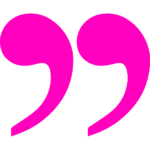
Post Off Quote
“The gift of learning to meditate is the greatest gift you can give yourself in this lifetime.”
– Sogyal Rinpoche

Post Off Affirmation
As the architect of my destiny I ensure my life is filled with love, joy, and abundance.
Showing 9–16 of 590 resultsSorted by latest



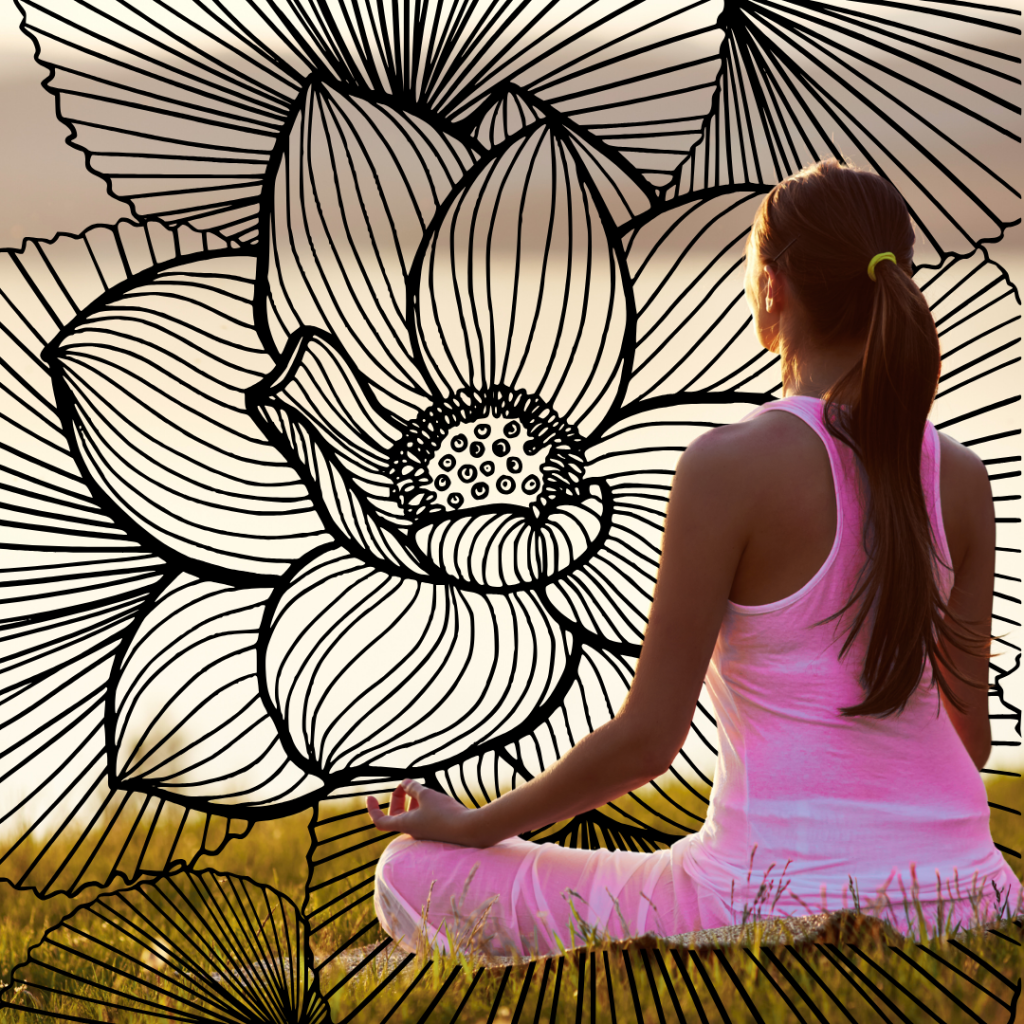
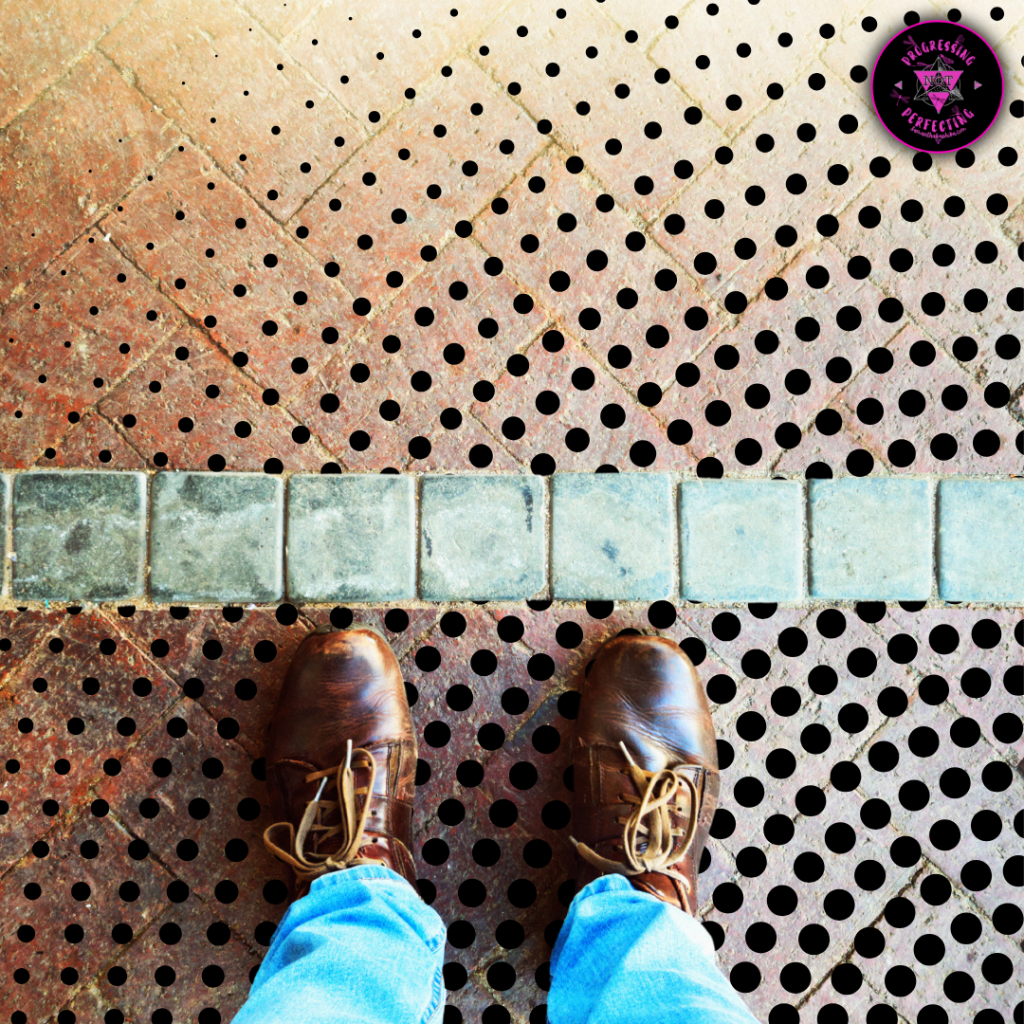


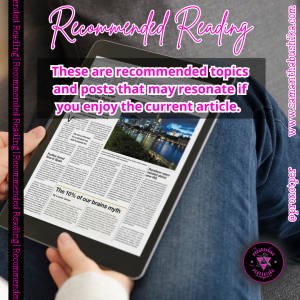
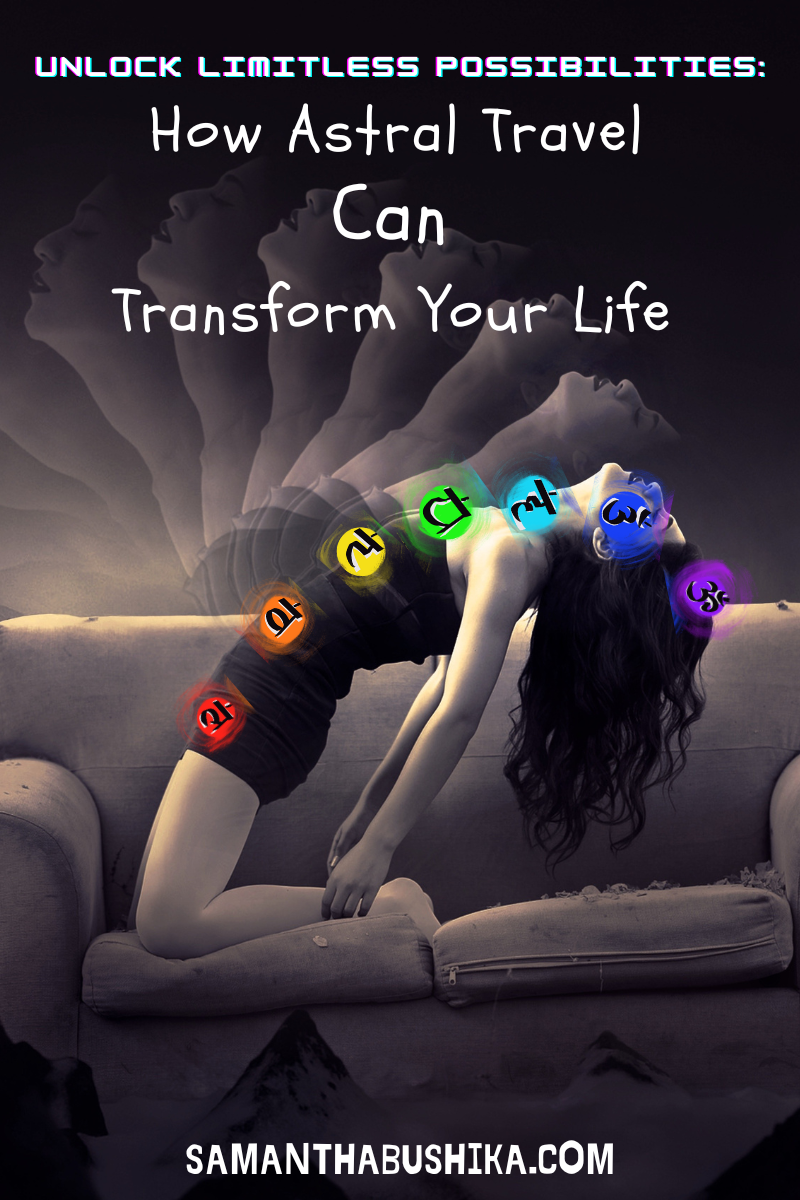


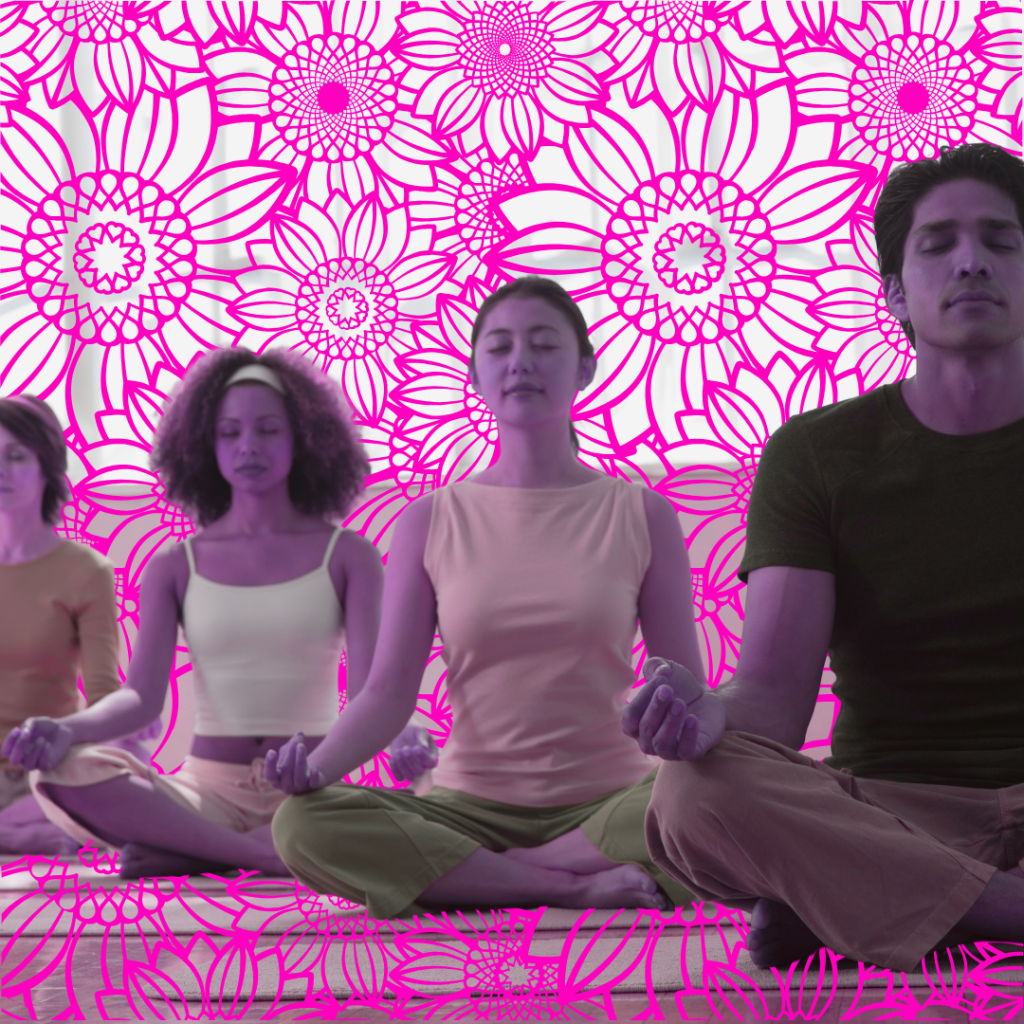
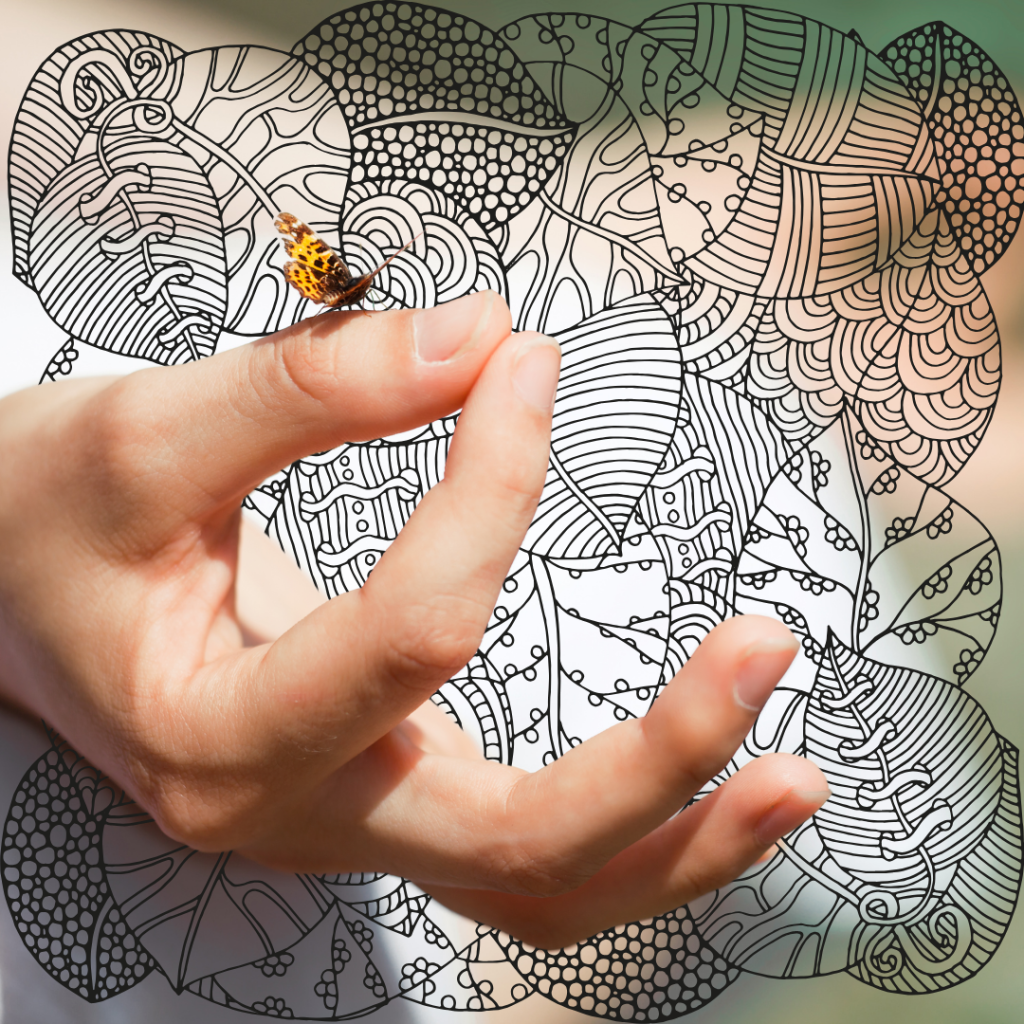
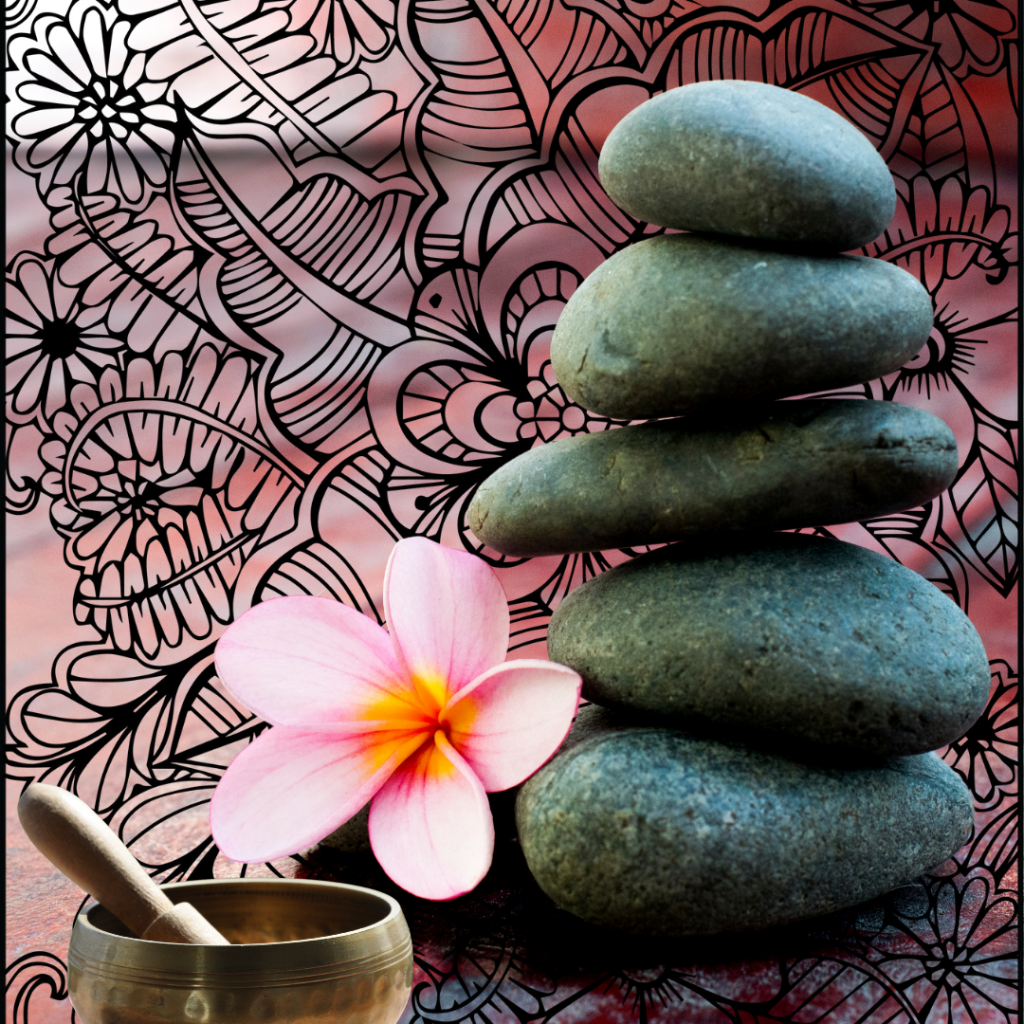
















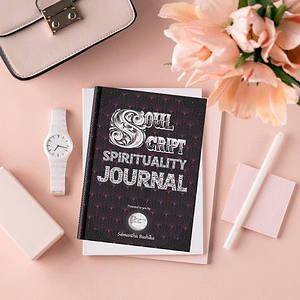
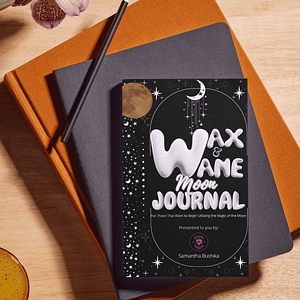
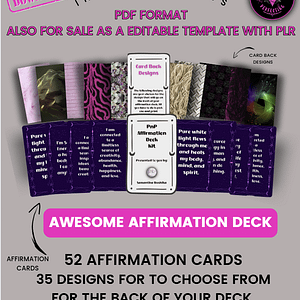





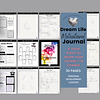
0 Comments